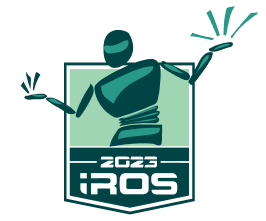Aerial Manipulation
Aerial Manipulation
A Special Issue proposal byV. LIPPIELLO, F. RUGGIERO, A. OLLERO
While unmanned aerial vehicles and drones are commonplace by now in applications such as picture taking or surveying, much research work remains to be done in applications where aerial vehicles must act on the environment by entering in contact with it.
By aerial manipulation it is intended the grasping, transporting, positioning, assembly and disassembly of mechanical parts, measurement instruments and any kind of objects, performed with UAVs endowed with small robotic arm(s) and gripper(s). This Special Issue aims at collecting the latest results achieved by researchers working in mechatronics, sensing, motion planning and control within the aerial manipulation research field. The proposed topic is strongly multidisciplinary, and the expected audience is wide.
Motivation
The introduction of aerial manipulation can be helpful especially in those industrial and service applications that are considered very dangerous for a human operator. For instance, think to a task of bridge inspection, high-voltage electric lines inspection and fixing-up, rotor blade repairing and so on. These tasks are both very unsafe and expensive, since the performance of professional climbers and specialists is requested. An unmanned aerial manipulator might indeed assist the human operator in these jobs or, at least, in the most hazardous and critical situations. Grasping an object during the flight with a UAV (equipped with only a gripper) poses several problems due to the under-actuation of the aerial vehicle, its unstable dynamics, and the coupling effects given by the presence of the object. The bigger the carried payload, the bigger should be the capacity of the single employed UAV. However, the sole gripper is not enough to obtain a complete evolution from passive into active tasks of the unmanned aerial vehicles: mechanical structures mounted on the UAVs are then essential to perform more complex actions. Therefore, an aerial manipulator might be an efficient solution providing an aerial vehicle with the capability of performing dexterous manipulation tasks. Nevertheless, like the presence of a carried object creates coupling effects in the dynamic model of the system, a mounted robot arm provides even more issues since its dynamics depends on the actual configuration state of the whole system.Topics of Interest
- Control of aerial manipulators
- Control of UAV in contact with the environment
- Motion planning of aerial manipulators
- Perception in aerial manipulation
- Mechatronic design of aerial manipulators
The Special Issue will thus cover several aspects spanning from the mechatronic design of novel aerial manipulator, to the use of sensors necessary to accomplish the sought tasks, and the use of motion planning and control techniques. This may also be a great opportunity to stir the current idea of aerial robotics that is too much conceived as simple inspection and sensing applications. Aerial manipulation is a great research challenge and this might be a chance to collect the most recent results of the field to enhance the autonomy requested to fulfill the addressed tasks.
Therefore, we do think that the proposed Special Issue is perfectly suitable for the Robotics and Automation Letters. Moreover, the possibility to present the work at the upcoming ICRA conference is without doubt a further stimulus to submit novel manuscripts and ideas in the proposed field. This will be also helpful in advertising and promoting the Special Issue.ENDORSEMENT
This proposed journal Special Issue is supported by the IEEE RAS Technical Committee on Aerial Robotics and Unmanned Aerial Vehicles as confirmed by the Technical Committee co-chair Anibal Ollero, also on behalf of the other co-chairs YangQuan Chen and Kimon P. Valvanis. Please, see the related endorsement email in attachment.TIMELINE
Special Issue Call Publication: July 25, 2017Special Issue Submission Opens: September 1, 2017
Special Issue Submission Closes: September 10, 2017
First Decision Communicated to Authors: December 5, 2017
Final Decision Communicated to Authors: February 8, 2018
Accepted RAL Papers appear on Xplore: February 27, 2018
Easy Links
Volunteer Resources







